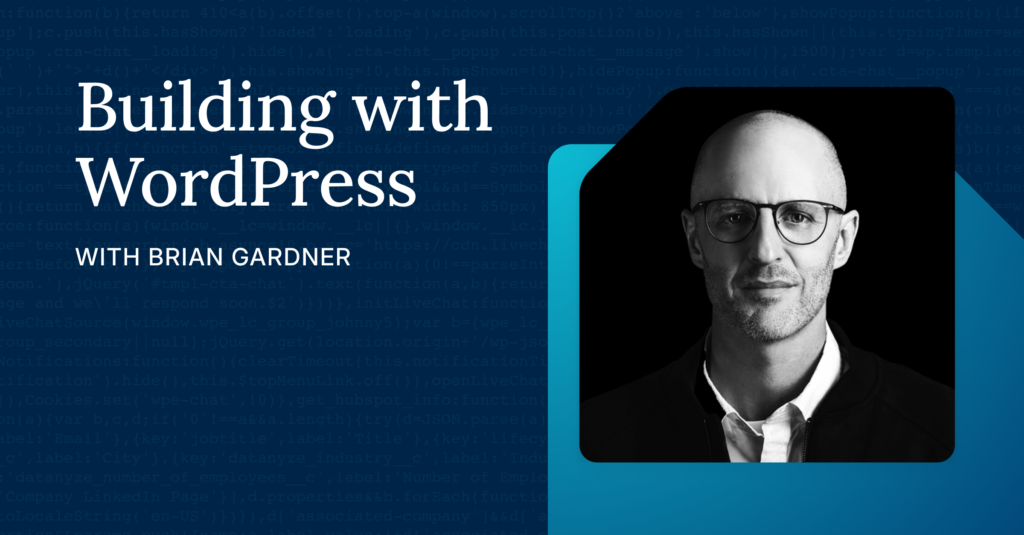
The Block Editor: A Smart Move for WordPress Agencies
Back in 2006, when I first started working with WordPress, building custom themes was all about diving into PHP files and hand-coding layouts from the ground up. Fast-forward to today and things have completely changed with the arrival of the block editor.
Recently, I hosted a webinar, “Mastering Web Development Efficiency: Automate & Scale Your Agency,” where I discussed how embracing new tools like the block editor and automation can help agencies scale faster and serve more clients without sacrificing quality.
Is your agency still using the classic editor?
If so, it might be time for a change. With the block editor, you can expedite workflow and make it easier for your design and development teams to work together. The transition and learning curve might take some time, but once you hit that “a-ha moment,” you’ll wonder why you didn’t do it sooner.
Let’s explore compelling reasons why your agency should consider investing time and resources into the block editor.
WordPress is becoming a design system
The block editor turns WordPress into a complete design system, so you don’t have to rely on PHP or custom templates for every project.
Block patterns and global styles make your workflow smoother, and your designs stay consistent. It lets you focus on what matters—giving clients great results—without wasting time on code or minor fixes. It’s just a simple, practical design that gets the job done.
When Nathan Rice and I created the Genesis Framework, we aimed to build a simple, structured system for developers. The block editor follows that same idea. You can design sections like hero images, testimonials, or call-to-action areas and reuse them across pages, projects, or clients. It saves agencies a lot of time and keeps designs consistent.
With Full Site Editing (FSE), you’re not just arbitrarily adding blocks—you’re designing the entire site layout using blocks, from header to footer. For agencies, this is a huge benefit. It makes the handoff smoother and gives clients more control, all while maintaining the design.
Create a base theme to expedite workflow
I’ve made my workflow easier by creating a base block theme. It’s a blueprint you can use as a starting point for every new project. Instead of creating a new theme from scratch for every client, you can customize the base theme to fit the client’s brand while saving yourself work hours.
When creating themes for StudioPress, starting from scratch was just part of the job. With block themes, it’s like using a template—the structure is already in place, and all you have to do is adjust the blocks to match the project’s needs. It’s faster, cleaner, and more consistent across your agency’s work.
With Global Styles, you can manage typography, colors, and other settings from one central spot, making changes across the entire site in minutes, not hours. The more you integrate blocks into your workflow, the more efficient and scalable your processes become.
Leverage block patterns for quicker builds
Another feature agencies should be taking advantage of is block patterns. Block patterns are pre-designed layouts—think of them as ready-to-go sections like pricing tables, contact forms, or hero sections—that you can reuse across multiple projects.
As we worked on Genesis, the goal was to make development quicker and easier for theme designers. Block patterns take that same idea to the next level. They allow you to save common design elements that you can quickly drop into any page with a single click, which speeds up development and keeps client sites consistent.
If your agency builds websites for small businesses, you probably have a well-designed block pattern ready for a service section. Instead of starting from scratch, reuse the pattern, update the content, and you’re done. This newfound process saves time and keeps the website looking consistent and professional.
Future-proof your agency workflows
The block editor isn’t just another feature—it’s the future of WordPress. Each core update shows more block functionality, better style controls, and stronger Full Site Editing tools. By embracing the block editor now, your agency is staying ahead and preparing for what’s next.
Agencies that stick to their classic workflows might feel comfortable, but they’ll eventually have to play catch-up. The block editor continues evolving, and clients expect more flexibility and control over their websites. Agencies that adopt these changes early will stay ahead of the competition.
Clients should appreciate the block editor because it empowers them to make content changes independently without worrying about breaking the site’s design. This frees up your team from minor edits and gives clients a sense of control and satisfaction, allowing you to focus on the bigger picture—designing and developing high-quality websites.
The time to embrace blocks is now
I’ve been building on WordPress for nearly two decades, and in that time, I’ve seen it evolve in ways none of us could have imagined. The block editor is one of the most significant shifts in this evolution, and it’s here to stay, shaping the future of WordPress development.
For folks who have traditionally built with custom fields and templates, you don’t have to worry about losing control—it just requires a different approach. With core blocks and patterns in the block editor, there’s more creative control, not less.
Adopting the block editor is crucial for long-term success. It’s not only faster and more flexible, but it also gives both developers and clients far greater control. Agencies that make this shift will stay ahead of the competition, while those clinging to outdated workflows will only risk falling further behind.
The digital world is constantly shifting, and so is WordPress. Getting on board with the block editor now doesn’t just keep your agency in the game—it sets you up to handle whatever comes next.
Start the conversation.